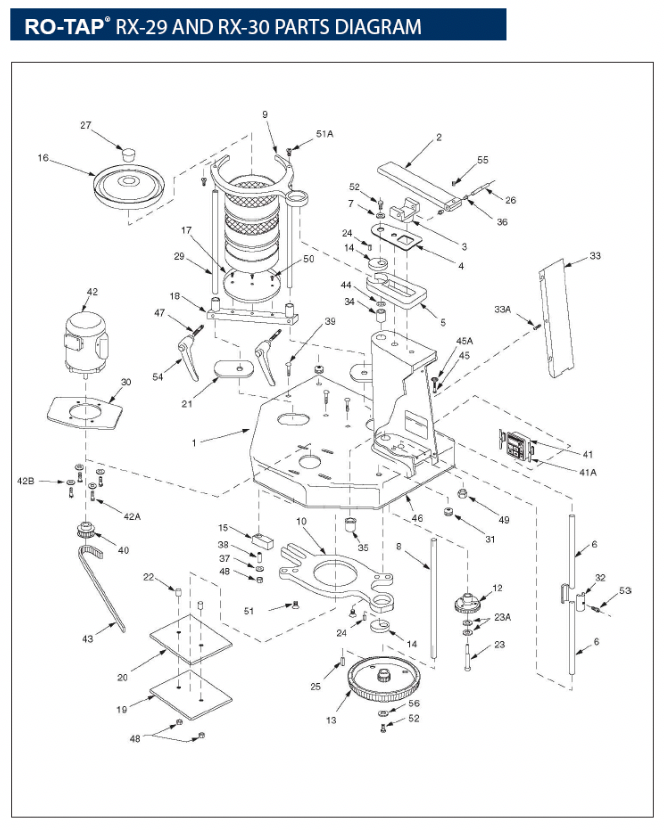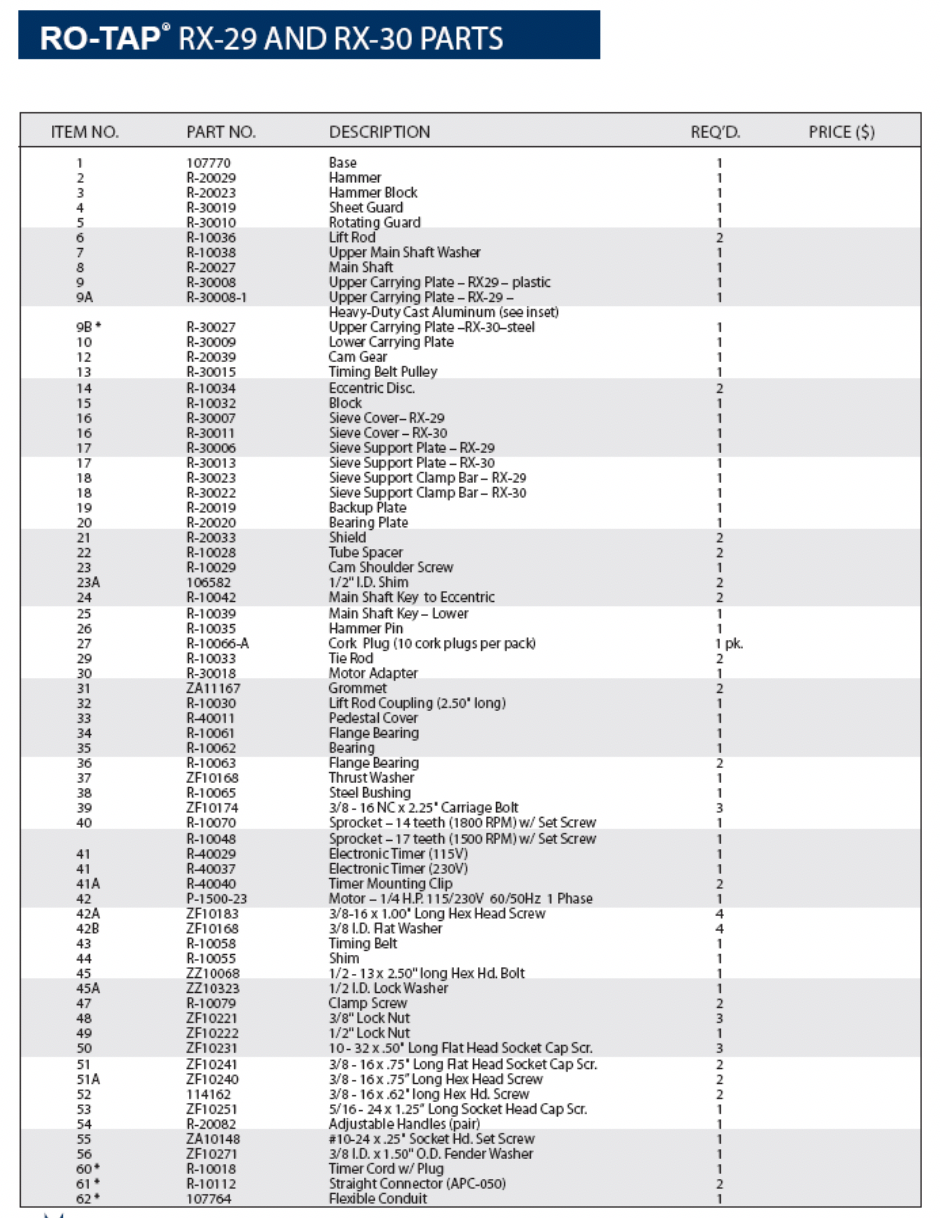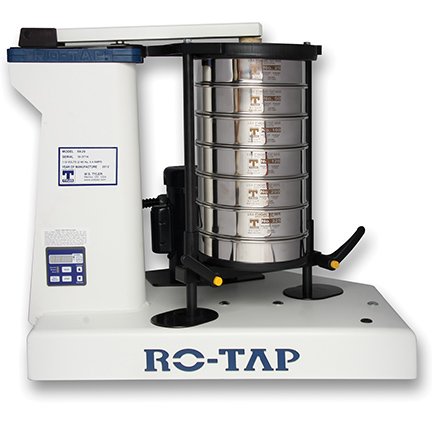Everything You Need to Know About The RO-TAP® Sieve Shaker (With Video)
We have been building and selling sieve shakers for over 100 years. We get a lot of questions about these machines in terms of specifications, part replacing, accessories, and calibration.
Most of those questions are about our most popular unit, the RO-TAP® RX-29.
We wrote this article to give you all the answers you may need in one convenient place.
Maybe you are considering buying a sieve shaker, and this may help you choose the right model for you.
If you already own a RX-29 or RX-30, then this article may be a good resource for you to come back to.
If you aren’t familiar with this model of sieve shaker, you may want to take a few minutes to view the video below and read our other article first: What is a sieve shaker?
Regardless of where you are in the particle analysis journey, we hope this article serves as a good source of information and helps you become a more informed user or buyer.
What is the Difference Between the RX-29 and the RX-30?
When it comes to these two machines, they are exactly the same in terms of shape, parts, functionality and noise level.
The difference between the two, is in the size of test sieves the machine is made to hold. This also affects the number of sieves the machine can hold.
The RX-29 is made for testing with 8” or 200 mm diameter sieves and can fit 6 full height sieves with a pan.
The RX-30 is made for testing with 12” or 300 mm diameter sieves and can fit 4 full height sieves with a pan.
So, for the sake of this article, you can assume all of the information is relevant to you regardless of which model you are interested in, or which one you own: the RX-29 or the RX-30
The Technical Stuff:
We know that to some people, the numbers are what matters. So we wanted to include all of the Specs in one place for you to refer too.
These are the specs for both the RX-29 and the RX-30 RO-TAP sieve shakers:
- Unit Weight: 180 lbs.
- Oscillations per minute: 278±10
- Oscillations Displacement 1-1/8” x 7/16”
- Taps per minute 150±10
- Hammer Weight: 5 lbs 6 oz.
- Electric Motor Rating: NEMA Nom. Eff. 64 / P.F. 61
- Draws 4.4 Amps
Sieve Shaker Calibration and Certification
“Can you certify or calibrate my Sieve shaker?”
We get asked this question all the time. When it comes to the world of particle analysis, everything is dictated by industry standards.
As it stands right now, there are no known standards (i.e. ASTM or ISO) that call out a sieve shaker or a RO-TAP’s performance.
When we talk to customers who are trying to ensure the accuracy of their RO-TAP Sieve Shaker with calibration or certification, we tell them that we offer the factory settings/specifications mentioned above.
We suggest checking that your machine meets these specifications every 6 months or so. Devices, gages, and tools that are used to measure performance should be calibrated on their own to their known source.
It is important to keep in mind that this information is offered as a guide and should not be considered an approved method or procedure.
The manufacturing specifications for the RX-29 and RX-30 can be verified using the following methods:
1. Oscillations per minute 278 +/- 10 – Count the oscillations for 10 sec. & multiply by 6.
2. Oscillations Displacement: 1-1/8” x 7/16” – Raise the sieve support plate up far enough so that you can affix a pencil or marker to the side of the support plate securing it in place. Then with the machine running place a pad of paper under the pencil allowing it to create an oval on the paper. Using a ruler, measure the width of the oval to find the displacement.
3. Taps per Minute: 150 ±10 Count the taps for 10 sec. & multiply by 6.
4. Hammer Weight: 5 lbs 6 oz. – The weight can be verified by placing it on a scale.
5. Electric Motor Rating: NEMA Nom. Eff. 64 / P.F. 61 1725rpms – A tachometer can be used to verify rpms.
Noise
Noise is something we always like to address when talking about these two machines.
The hammer on top of the machine taps the sieve stack to help the particles find the mesh openings. This creates some noise.
If you are here specifically because of a noise that your machine is making or another issue regarding noise, you may want to check out our other article: 5 Reasons Your Sieve Shaker is Noisy. It goes in-depth on all things noise levels and sieve shakers.
If you do want to eliminate some of that noise, you can purchase a sound enclosure cabinet.
The sound enclosure cabinet is designed specifically for the RO-TAP Sieve Shakers. It reduces the noise level from 85 db to 78 db.
The cabinet can be used with or without the stand and you can check out our cost information for that cabinet here.
Maintenance and Replacing Parts
Sieve shakers are very durable machines. We get calls from people that have purchased our machines over 50 years ago, and they are still using them today.
Just because they last a long time, doesn’t mean that they won’t need maintenance or don’t require upkeep.
We like to say that during the first year of using a brand new RO-TAP, you shouldn’t need to change out any parts. Some oil along the way on parts that are rubbing may be required, but it should work smoothly.
After a prolonged period of use, you may begin to see some of the major parts starting to show some wear.
We have put together maintenance kits that offer those most commonly replaced parts. The parts aren’t too difficult to replace and can be done by following some simple instructions.
We get a lot of calls from customers talking about specific components and wanting to troubleshoot their machines with us. We added the RX-29 and RX-30 parts diagram to this article because it is an important resource for you.
This diagram will help you locate parts on your machine to replace them. It will also help you work with your own maintenance team, or our customer service department, to pinpoint issues you may have with your machine.


To Sum it All Up
We covered quite a few different areas in this article but we think they are all important if you are either considering buying a RO-TAP Sieve Shaker or if you already own one.
We hope this article helped clear some things up for you. If nothing else, we hope this article helped you become a more informed buyer.
If you still have other questions feel free to contact us and we would be happy to talk with you.




